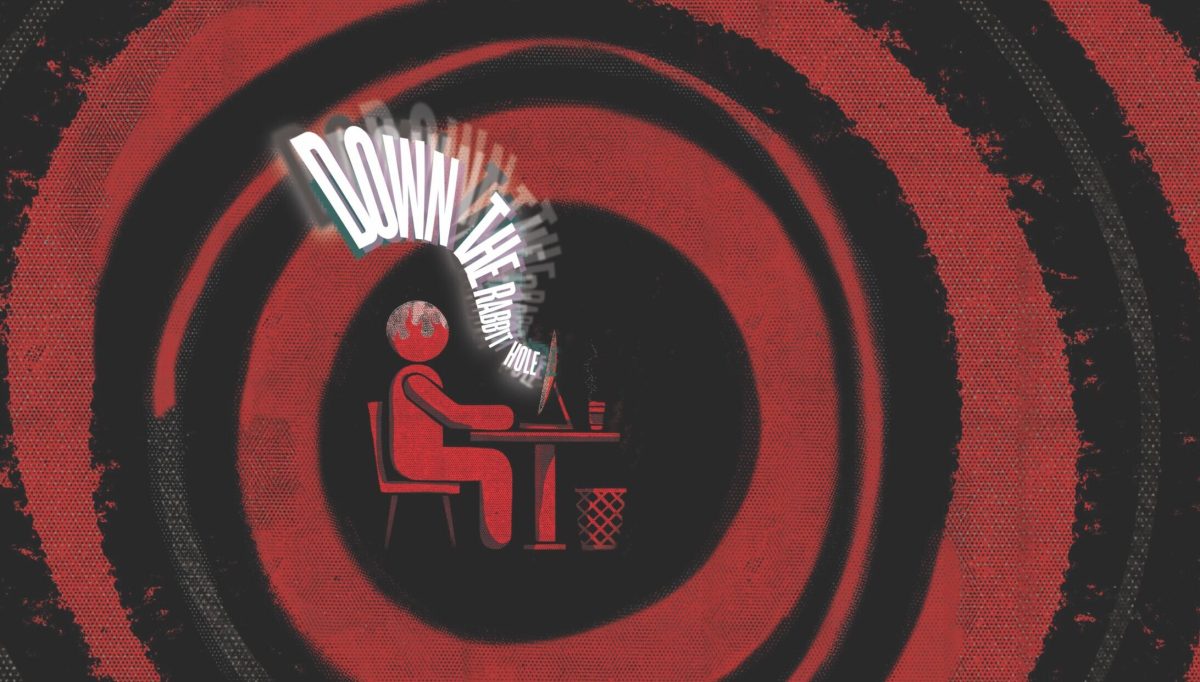An armed security guard donning a bullet-proof vest informs the growing crowd outside to line up single file against a brick wall, IDs ready, as electronic music plays from a speaker next to a table of merchandise stamped with a signature green leaf.
These people eagerly wait in line to legally purchase medical, and/or recreational marijuana.
Inside the dispensary, the waiting room is sparkling clean with iPads for sign-ins, flat screen televisions and a separate consultation area for those who wish to inquire about medical treatments. Their products line the shelves with a colorful array of options ranging from ‘Hey Jude’ flower, to ‘Cinnamon’ capsules and cannabis infused ‘Bonfire S’mores.’
Torrey Holistics is the first licensed and permitted cannabis dispensary in the State of California. Located in San Diego, the enterprise, along with countless others, underwent drastic change upon the legalization of recreational marijuana in January.
“During this time, we had to work quickly and with great thoroughness and vigilance to ensure we met all compliance standards,” Ruthie Edelson, Marketing Director of Torrey Holistics said.
While cannabis is projected to funnel over $5 billion in revenue by the year 2019, this new legislation initially had a ‘cloud’ of confusion cast over it and uncertainty for many of those involved in the industry. Some companies are thriving and compliant. Others operate underground and risk their chances of being shut down, some of whom refused to be interviewed for this article.
While the legislation made major headlines promptly after the legislation took effect in January, most of the coverage has quieted five months later.
Why?
A number of factors have caused certain players of this industry to stay low-key, while other players are dominating the game. More than 5,000 cannabis operators, from Shasta Lake to the City of San Diego, hold state licenses in the largest cannabis market in the country, as stated by the California Cannabis Portal.
Those who are compliant, tout their role in the industry and the impact it has on their lives, while others hide behind a cloud of smoke in fear of having a misstep with the new laws.
Federal law still prohibits marijuana. The U.S classifies marijuana as a schedule one drug falling under the same category as other drugs such as heroin. Navigating this tricky concept has been a triumph for some and a downfall, or work-in-progress for others.
The fact is, while some are in compliance with state laws, numerous companies in North County and San Diego are functioning and thriving illegally.
Look through a micro lense of San Diego and parts of North County to see how people involved in various parts of the industry are handling the rapidly changing landscape of cannabis.
The cloud over the law:
“We have spent millions of dollars battling illegals operators. The people who will be first in line to ask for stronger enforcement are those who possess a legal license,” Vista City Council Member, John B. Franklin stated at the city’s Special Marijuana Initiatives Workshop Meeting on March 20.
At the meeting, city officials debated details such as how many dispensaries should be permitted and what locations. A main focus of conversation: how cannabis will impact their city’s economy.
The law approved by voters in 2016, Proposition 64, does not in fact grant total freedom to cultivate, purchase and smoke-up wherever and whenever one pleases.
According to the Bureau of Cannabis Control, one must apply for a yearly state license, a process that proves to be extensive when taking into account compliance with local jurisdictions.
That being said, it is up to the cities, such as Vista, to decide how to handle their mini industries.
“I am for storefronts, delivery, testing and manufacturing of cannabis for our city. I have slight concerns in regards to what it may initially do to property value, but I believe what it does to our economy and community, it brings jobs in, it brings higher tax revenue,” Vista City Council Member, Joe Green said.
Vista’s proposed council initiative would allow two sites for marijuana cultivation and two for testing and research. It would also permit two retail storefronts, and two delivery services.
This initative is restricted for medical marijuana use only. Local jurisdictions continue to work on how cannabis will be incorporated into their individual communities and economies. Meanwhile, cities like Vista continue to shut down black market, illegal retail shops to make room for legal storefronts and allow those to flourish.What about the growers?
This area remains particularly cloudy, because it is not permitted in North County San Diego. “At this point it is illegal for farmers to produce cannabis in San Diego County,” Eric Larson, Executive Director of the San Diego County Farm Bureau explained. “In a couple cities they only allow farming inside industrial buildings.”

Cannabis Innovation Today:
A woman named Beth, who has a PhD in Molecular Biology and biochemistry from University of California Irvine, is a breast cancer survivor, but doesn’t want her name used.
“Chemo made me lose 45 pounds and gave me relentless headaches and other horrible side effects. The medications made it worse. Weed was the only thing that would alleviate my pain. It gave me my life back,” Beth said.
She is also a renowned Cannabis Consultant at Torrey Holistics and a strong advocate for recreational and medicinal marijuana.
“I meet with patients to help them understand how to incorporate weed into their lives and what it can do for them. I am a scientist, so I lead them towards peer reviewed, well known literature and resources and letting them know what the research means,” Dr. Beth added.
Using knowledge gained from both her educational background and personal experience, Dr. Beth claimed that the cannabis industry was the most logical lateral field to transition to after leaving pharmacology.
Beth is just one of the growing number of proponents for scientific cannabis research.
“I wanted to take a really scientific approach to my work as a consultant as opposed to a stoner approach,” Dr. Beth said.
The Center for Medicinal Cannabis Research at the University of California, San Diego has three active studies underway that examine the effects of cannabis on factors such as HIV neuropathic pain and driving performance.
There have been over 150 cannabinoids identified that have not been tapped to their full potential. THC and CBD are merely the two most commonly known.
“I am intrigued by how much we still don’t know about cannabis and how much potential there is,” Dr. Beth said.
The scientific route is only one innovative way people are capitalizing on the cannabis industry.
Marketers, editors and journalists are jumping on board as well.
Pro-cannabis publications are debuting and revamping their efforts to highlight all things marijuana for a growing viewership.
Sensi Magazine, a local city lifestyle brand centered around the cannabis industry coins itself as a publication dedicated to showcasing the “new normal in the post- prohibition world.”
Launched in Colorado in 2016, Sensi Magazine now publishes monthly editions in Los Angeles, Orange County, San Diego, Boston and Las Vegas and plans to expand to over 60 markets in 2018.
Through social media, brands like Sensi promote their publications and build a loyal following. Launch parties unify local businesses and provide a platform for networking.
In an Instagram post, Sensi Magazine promoted their San Diego edition launch: “We will be toasting to the spread of legalization, the spread of Sensi and the start of our growing network of pro-cannabis lifestyle magazine popping up all over the country.”
The Future of the Industry:
Long gone are the days that pot is unanimously stereotyped as a lowly substance ruining the minds of users and corrupting our society. While opponents of the cannabis industry still exist, the growing number of supporters contribute to the diminishing of the stigma.
About 6-in-10 Americans believe marijuana use should be legalized, reflecting a steady increase over the past decade, according to a Pew Research Center survey in 2017.
By the year 2021, the industry is projected to haul in around $17 billion in revenue according to the Hemp Business Journal.
Sam Humeid, President of the San Diego Cannabis Delivery Alliance and co-founder of Flame & Leaf noticed how the industry has changed throughout his decade of experience.
“I was on the frontlines of the industry when I first started 12 years ago. The ‘sexiness’ of a common dispensary has already faded,” Humeid said.
Humeid explained that the future of the industry is moving towards delivery and independent cannabis therapy practitioners or product developers.
Morgan Sutton, an independent contractor and product developer (CBD exclusively) based out of San Diego has broad hopes for the industry.
“Ideally, I envision that cannabis will be legalized on a national level, which would make room for more innovation and breakthrough medical research,” Sutton said.
Dr. Beth foresees the industry integrating with pharmaceutical companies in the future.
“There’s an open space for pharma and cannabis to co-exist and even work in conjunction, such as producing more over the counter drugs that are cannabis based,” Dr. Beth said.
Humeid noted that the public’s standards in regards to the product and customer service increased since he started: “What people want now is safe, reliable access. They want to be able to reach out to an educated cannabis therapy practitioner to teach them what they need properly.”
Back at Torrey Holistics, the team strives to grow the line that already filters out the door. Through professionalism, compliance and marketing strategy, San Diego and surrounding counties are bringing the industry into a new frontier.
All proponents of the legal cannabis agree that while they may encounter rough landscape along the way, there’s only one way for the industry to go: up.



















